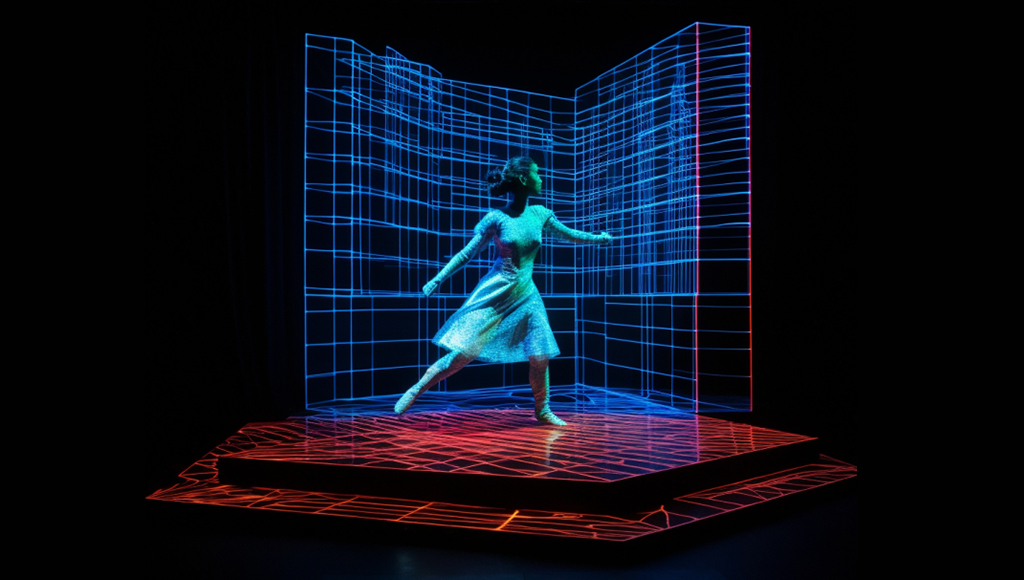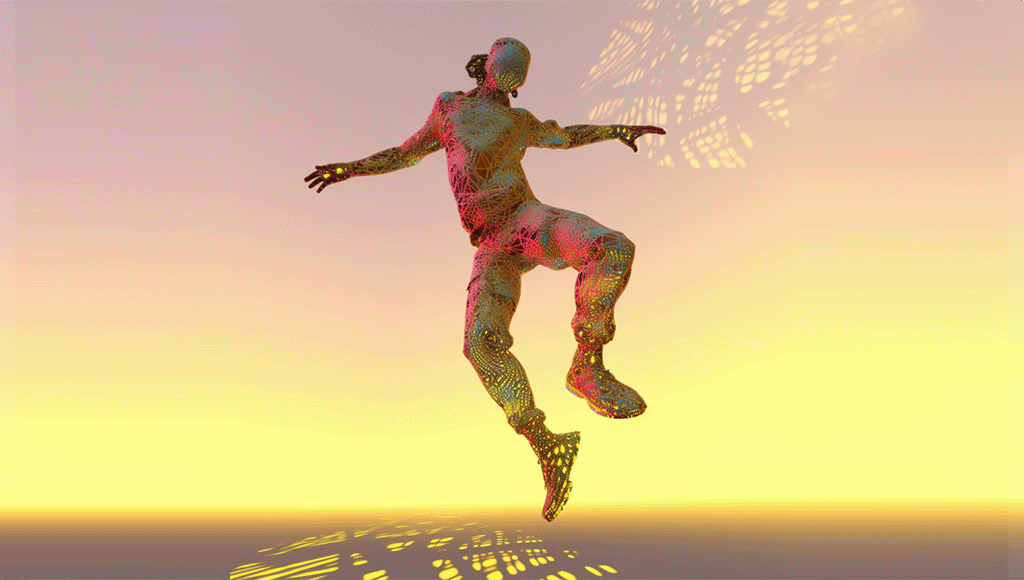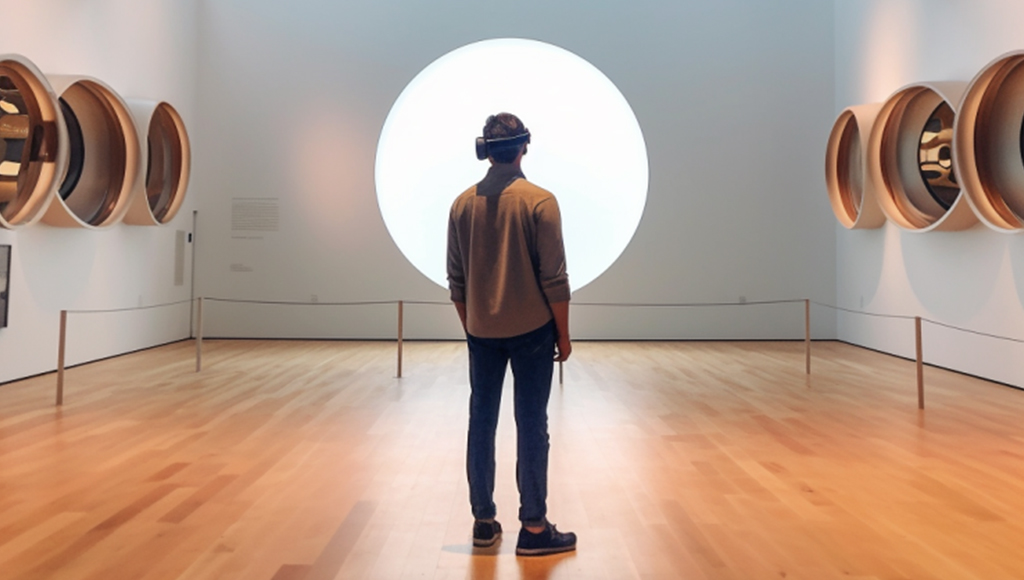Creativity and technology
Innovation in performing arts.
Author: Annalisa Mombelli

AI-generated image
It is not by adapting an artistic sector and integrating it into production processes that innovation will be fostered, and the spirit of creativity and proposal cultivated. Art should be brought into our lives and into the lives of our companies. It is what remains specifically human in the digital age and artificial intelligence. One can draw inspiration from its processes and protagonists, positioning artistic creation at the centre and not at the margins of business and society. In this way, a New Renaissance could happen [1].
This statement also leads one to reflect on another point, namely, what is creativity and how is it perceived? What does it mean today, and will mean in the future, to take creativity outside the artistic disciplines?
The European community still does not seem to offer a definition legitimised by treaties or directives and regulations, or at most we talk about intellectual property, ideas, or copyrighted tools and products. Historically, there has been a shift from the idea of culture in a broad sense, to an initial distinction in 1977 between culture and the cultural sector, to the European Year of Creativity (EYCI) in 2009 [2], and the definition in 2016 of Cultural and Creative Industries.
Creativity does not have an easy definition; an endless number of attempts can be made to trace its contours. Perhaps the European Union is the ambassador of it precisely because this indefiniteness allows it to intervene without raising issues of competence between member states and the EU. Therefore, the European Commission in the first place has step by step incorporated and legitimised creativity as part of European culture and as an intrinsic element of innovation and cultural and creative industries, based on individual or collective creativity, with the potential to create innovation. Creative-driven seems to have become the keyword, or slogan, underlying European calls for proposals and digital innovation topics. Moreover, fostering creativity is also one of the UN sustainable goals, taken up and added to the Agenda for Culture Europe in 2020 as one of the priorities called Culture as a driver for sustainable development. But is making it part of the economic and technological process aimed at innovation the only way to integrate it into the consciousness of the European Community and the Member States? Is there a risk of “anesthetizing” it and forcing it towards the Green Deal and Digital Transformation mission statements? Is creativity just a tool or does it also need to be supported and nurtured, not just “consumed”? Perhaps the New European Bauhaus and the future KIC for culture and creativity are the first “facilitators” designed to best integrate creativity and culture in the context of the Single Market, the pivot around which the European Union then concretely revolves, without too many alterations from above, but with a bottom-up thrust. These are reflections that would merit further study, given that now this is a step/process that is still “In the making”.

AI-generated image
Does creativity remain something innate, which is suddenly ignited in the mind of man capable of “seeing” novel connections between multiple elements? Is it something whose results are tangible? This concreteness has perhaps prompted scholars to include it among the five “core criteria” of an R&D activity [3], thus becoming persistent in the great theme of innovation addressed in recent years.
Therefore, also dance, a creative impulse involving body and mind, already considered a cultural heritage to protect [4],is not to be regarded exclusively as a performing arts sector butbecomes in the context of the new European calls for proposals as a factor and vector for research and development [5].
Dance resides in the audience’s sense of sight, although dance itself is a highly tactile experience. Can we then see dance in other ways? For example, it would be very disruptive to evolve virtual reality visors to allow sightless people to ‘see’ and ‘hear’ the performance. Creating visors for the blind despite the apparent oxymoron could really be an innovative area of research fuelled by artistic creativity, perhaps even trying to combine recognition of their emotions to allow them to attend the dance performance. There are prototypes that demonstrate how technology, haptics, in particular, can come to the aid of an inclusive experience and support the communicative relationship between performer and visually impaired spectator, thus making the dancer’s body present by touch [6].

AI-generated image
Finally, another highly topical area of experimentation is the Metaverse, which combines various elements of technology allowing users to interact with each other within a digital universe. The Metaverse mixes technologies, from extended reality to haptics, from 3D engines to blockchain, and innovation can be carried out as much by big industries and SMEs as by Universities and Startups. The application sectors are variable: from gaming to retail, from entertainment and media to education. Recently, a dance experience has also been prototyped in the Metaverse[7] .
It is becoming clearer how using Artificial Intelligence could be an opportunity in content creation, for audience engagement and accessibility of content, optimising the audience experience itself [8]. In recent times AI has been experimentally used to support and enhance the creative process in the performing arts, for example, choreographers have used AI, using an archive of work to ‘train’ the AI, or to choreograph a new performance, writers have collaborated with AI to explore how a computer might inform a new play. AI is used as part of improvisation in theatre, robots are used in live performances and to theatrically interact with humans[9].
How then can the performing arts solve the proposed challenges or propose new ones?
Maybe, an answer is searching for new performance narratives or making dance available as an unexplored field of experimentation. It is necessary to channel the creative flow in directions that are also unusual for dance by taking up the challenges of nowadays.
Thus, the performing arts, and dance, can truly become the impetus for a digital technological evolution not only to respond to issues within its own sector but also to drive innovation in other contexts.
[1] Ferrazzi, C. (12 August 2021), Il Nuovo Rinascimento. L’era digitale richiede anche una trasformazione intellettuale. Dipende da noi., Il Foglio Quotidiano. Claudia Ferrazzi, founder of Viarte start-up, former Macron advisor for culture, and former deputy general administrator of the Louvre.
[2] Decisione n. 1350/2008/CE del Parlamento europeo e del Consiglio, del 16 dicembre 2008, riguardante l’Anno europeo della creatività e dell’innovazione (2009). “The aim is ‘to raise awareness of the importance of creativity and innovation as key competences for personal, social and economic development’ See also: https://eur-lex.europa.eu/IT/legal-content/summary/european-year-of-creativity-and-innovation- 2009.html
[3] The updated Frascati Manual (7th ed., OECD 2015) http://oe.cd/frascati
[4] See Art. 2.2, Convention for the Safeguarding of the Intangible Cultural Heritage, Paris, 2003: “The “intangible cultural heritage”, as defined in paragraph 1 above, is manifested inter alia in the following domains: (a) oral traditions and expressions, including language as a vehicle of the intangible cultural heritage; (b) performing arts; (c) social practices, rituals, and festive events; (d) knowledge and practices concerning nature and the universe; (e) traditional craftsmanship”.
[5] Stegmeijer, E., & Veldpaus, L. (2021). A research agenda for heritage planning: Perspectives from Europe. Edward Elgar Publishing, p. 8 https://www.e-elgar.com/assets/95248b6070/STEGMEIJER_9781788974622_t-compressed.pdf
[6] The choreo-haptic project: Haptic device as choreographic medium: multi-modal communication conference. (2013). University of Edinburgh Research Explorer. https://www.research.ed.ac.uk/en/ publications/the-choreo-haptic-project-haptic-device-as-choreographic-medium-m
[7] https://www.gold.ac.uk/calendar/?id=13686
[8] European Commission, Directorate-General for Communications Networks, Content and Technology, Izsak, K., Terrier, A., Kreutzer, S., et al., Opportunities and challenges of artificial intelligence technologies for the cultural and creative sectors, 2022, pp. 186-188. https://data.europa.eu/doi/10.2759/144212
Keep in contact.
If you are interested in collaborating with us or if you would like information about our services, please contact us and we will be happy to help. Let’s get in touch and make something great happen.